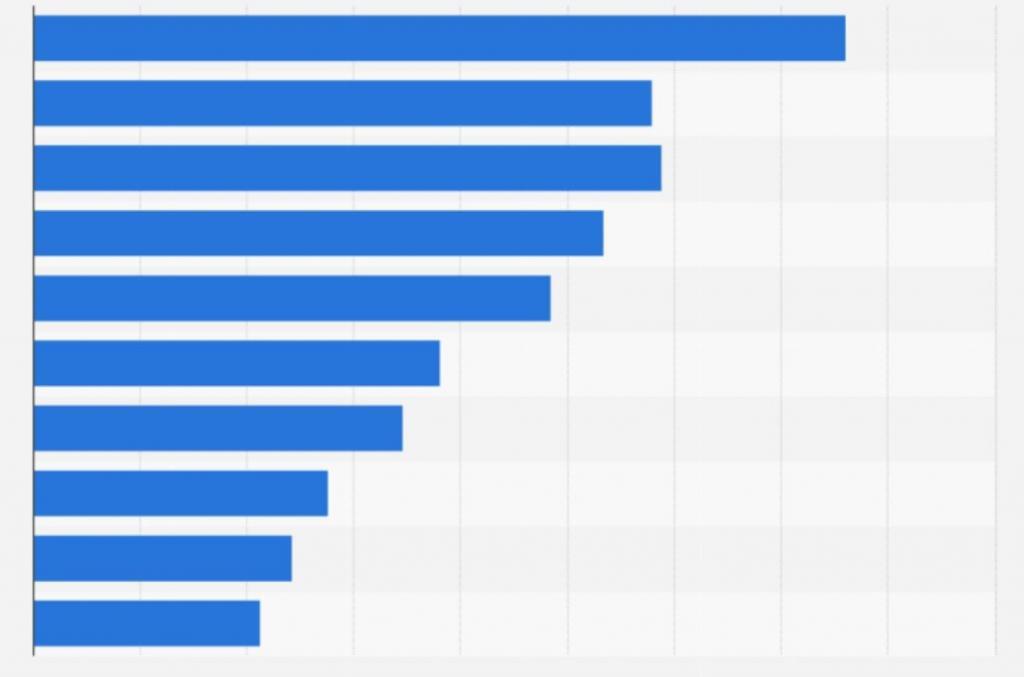So, you are a big data aspirant, and would love to break into the said domain with utter ease. But then, you are getting confused about what programming language to choose to train into. The popular and widely accepted coding languages in the current times comprise Python, R, Scala, the Hadoop languages (Hive, Pig, etc.), Java and SAS. However, the language Java is fast losing its sheen, with only 12% of data science professionals currently working on big data projects preferring Java over any other language.

Source: Statista
As per a 2019 LinkedIn survey, the top three in-demand data science skills, in order from top to bottom, were Python, R, & SQL. Although, the fact of the matter is that language R drives about 50% of all big data operations, while the language SAS constitutes 36% of all data science work being done across the world. Python is utilized in 35% of all the ongoing data science projects, while others comprise only a 10% share of the wagon wheel.
Here, in this article, we will talk about the 4 most popular big data programming languages – Python, R, Java, and Scala. But, before we proceed further into the detailed article, let’s discuss about what programming language will suit the best for your big data career aspirations, and why.
Determining the Most-Suited Data Science Coding Language for You
Ask yourself the following questions before you go on deciding the best-suited big data programming language for you:
- What task do you have at hand rite now?
- Is the chosen data science programming language serves your long-term career plans?
- What degree of prowess you possess in the coding languages that you already know of?
- Are you mentally-prepared to move to the next level of expertise?
- To what degree your organization, or prospective firm, deploys data science?
- Are you ready to train into advanced data science concepts?
Now, let’s move on to discussing the top four programming languages for big data scientists that are currently utilized in working on big data projects worldwide.
Top 4 Big Data Programming Languages
#1. R
R is the language for statisticians. But almost all senior big data scientists know the said language because it has increasingly become a necessity. The junior-level big data scientists can also master the said programming language by speeding up their learnings in SAS, Matlab, and OCTAVE. R do serve as a powerful data analytics coding language, but does not act as strong as a general-purpose coding language while working on a typical data science project.
For instance, if one can execute a great model using language R, but then, you would be forced to translate it into Scala or Python before deploying it into production. R is not as effective as other popular data science programming languages while executing on tasks such as writing code for clustering control system, as the debugging process would then become intensely difficult to perform.
#2. Python
Python is, at present, the most popular data science programming language, with a majority of big data scientists familiar with the said language across industry sectors and geographies. If one is home-growing a big data development team to handle his firm’s data science operations, Python would be relatively easy to deploy, as it’s easy to learn (just another object-oriented coding language for big data engineers to learn). Besides, Python also has this distinct benefit attached to it that it’s much easier to be read by the humans.
#3. Scala
Scala belongs to JVM (Java Virtual Machine) ecosystem that makes it powerful and highly flexible straight away. It is a perfect blend of an objected-oriented and functional language, and is overwhelmingly popular in the finance sector wherein firms are required to deal with huge sets of widely-fragmented data (imagine about social media degree of data volume & related distribution). Spark and Kafka are backed by Scala. Besides, one can do much more with far less coding in Scala as compared to Java.
#4. Java
As a matter of fact, a few dozen lines of Scala code will amount to a few hundred lines of Java coding. However, Java’s latest version has made big improvements. Although, it’s never going to be as mean and as lean as Scala, but there are unique advantages associated with Java like its default habitats in Hadoop and a few other big data tools and frameworks. Further, when it comes to products of JVM ecosystem such as HDFS, Spark, Storm, Apache Beam, and MapReduce, Java becomes the universe King of the data science coding domain.
Concluding Thoughts
So, it eventually comes down to, what language to choose among the four? Well, that’s entirely dependent on what kind of data science projects you will be undertaking in your future career. When it boils down to hardcore analytics, R would be the most apt language to consider. When you intend to work with neural networks, Python should be your choice. To find an ideal solution to production streaming, Java would be an ideal language to deploy. Then, there are R & Python that can become the answer to any data science problem that’s known to mankind, especially when both are deployed in combination.
Related posts:








